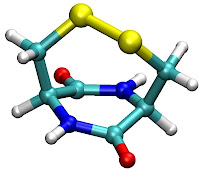 1. Carbohydrates are the compound that provide energy to living cells. They are the main energy source because they activate instant cellular energy. The carbohydrates we use as food comes from photosynthesis of plants. The compounds monomers are monosaccharides or a single simple sugar (glucose, fructose) and disaccharides or two simple sugars bonded together.
1. Carbohydrates are the compound that provide energy to living cells. They are the main energy source because they activate instant cellular energy. The carbohydrates we use as food comes from photosynthesis of plants. The compounds monomers are monosaccharides or a single simple sugar (glucose, fructose) and disaccharides or two simple sugars bonded together. 2. Lipids function as energy storage, structural components of cell membranes, and as signaling molecules. This compound is made up of naturally occurring molecules such as fat, waxes, sterols, etc. Fats are the biggest group of lipids. The monomers of this compound are fatty acids and glycerol.
3. Proteins are involved in nearly all cell functions, each having their own specific function within the body. Proteins are used for structural support, bodily movement, and defense against germs. Antibodies, enzymes, hormonal proteins, and storage proteins are all types of protein with different functions. They not only vary in function but structure as well, each one is a distinct three dimensional shape. The monomers of this compound are are amino acids.
4. Nucleic Acids transfer genetic information from one generation to the next in living organisms. There are 2 types of nucleic acid; deoxyribonucleic acid (DNA), and ribonucleic acid (RNA). Each have their own role in transferring genetic information. The monomers of it are nucleotides, which have three parts; a nitrogenous base, a five carbon sugar, and a phosphate group.

If the products you look for are not in our catalog we would be pleased to offer our custom synthesis service. 2785-87-7
ReplyDelete